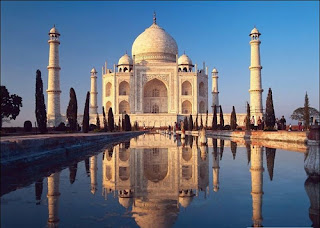The constructions started in the 5th Century B.C. It is actually many walls put together and stretches over 4,000 miles and was constructed to protect the Chinese Empire from the Xiongnu people in the north. The wall was initially built of stone, grass, earth and wood, but bricks were used once the production started. It is believed that about 2-3 million Chinese died as part of this project.
Featured Posts
Monday, December 3, 2012
Great Wall of China, China
The constructions started in the 5th Century B.C. It is actually many walls put together and stretches over 4,000 miles and was constructed to protect the Chinese Empire from the Xiongnu people in the north. The wall was initially built of stone, grass, earth and wood, but bricks were used once the production started. It is believed that about 2-3 million Chinese died as part of this project.
Labels:
7 New World Wonders
The ruins of Petra, Jordan
Described by the UNESCO as “one of the most precious cultural properties of man’s cultural heritage, Petra is an archeological site on the slope of Mount Hor. It is one of the new wonders of the world and is famous for its rock cut architecture.
This site was kept hidden till 1812 when it was discovered by a Swiss explorer. It was said to have been prepared by God for the Jewish people. Petra once flourished under the Roman empire but a rapid decline began with the Arabian trade being taken elsewhere. Then an earthquake caused a lot of destruction. Tourists throng the place to get a glimpse of the ruins of this beautiful city.
Labels:
7 New World Wonders
Taj Mahal, India
The Taj Mahal in India is one of the wonders of the world and is one of the most beautiful mausoleums constructed by the Mughal emperor Shah Jahan in memory of his favorite queen, Mumtaz Mahal. Located in Agra, white marble is used in the creation of this symbol of love and is considered to be the pinnacle of the famous Mughal architecture.
Story goes that the emperor was grief stricken when he lost his beloved third wife, Mumtaz Mahal. It took several thousands of craftsmen, artisans and about twenty years to construct it. The masons, stonecutters, carvers, inlayers, calligraphers, painters and others were brought from the entire empire as well as from Iran and Central Asia. Semi-precious stones were used for inlay ornamentation. It later became the mausoleum of Shah Jahan too. This is a huge tourist attraction with one to two million tourists visiting it every year.
Labels:
7 New World Wonders,
Religious Places
Subscribe to:
Comments (Atom)



























